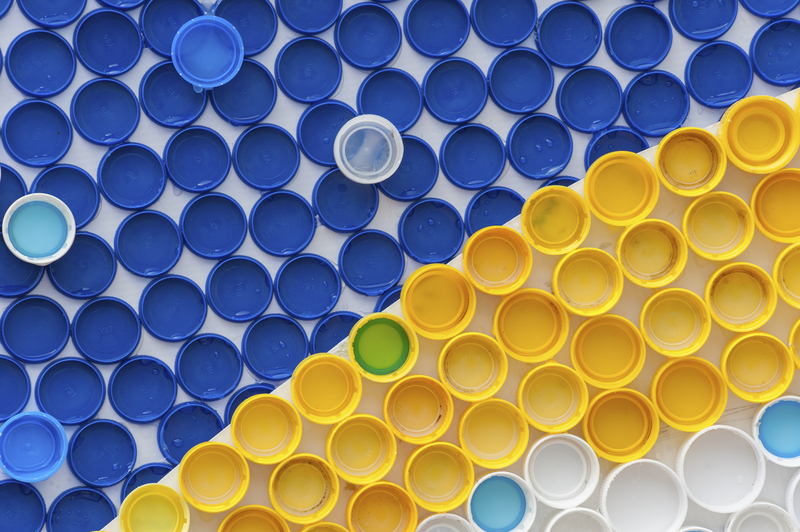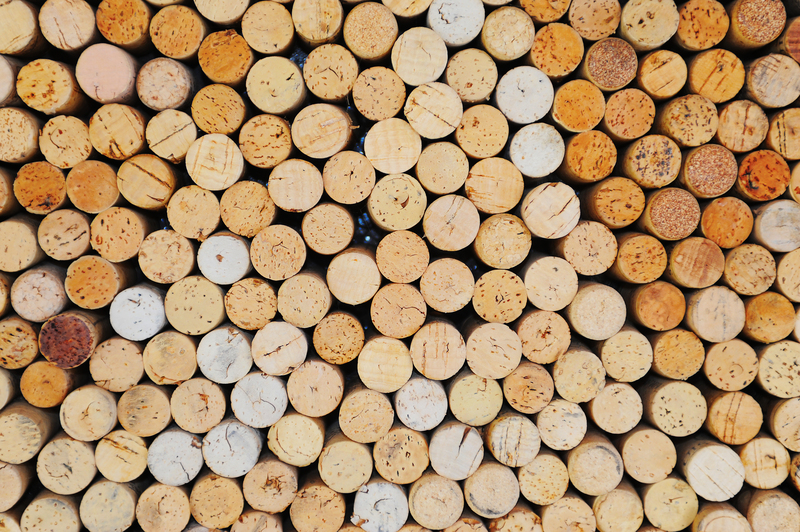DIY Guide To Upgraded Home Recycling
Are you looking to make a positive environmental impact from the comfort of your own home? If so, embracing upgraded home recycling is a fantastic way to contribute. This comprehensive DIY guide will walk you through innovative techniques, smart sorting tips, and creative projects to boost your recycling efforts. Read on to discover how you can transform your waste into valuable resources, reduce your ecological footprint, and inspire others to follow suit.
Why Upgrade Your Home Recycling System?
Traditional recycling is a powerful tool for environmental preservation, but upgraded home recycling systems take things to the next level. Here's why you should consider an upgrade:
- Reduce landfill waste: Efficient systems send less to the dump.
- Save money: Reusing and repurposing can cut household expenses.
- Support the circular economy: You contribute to product lifecycles that keep materials in use longer.
- Teach sustainability: Modeling eco-friendly habits influences family, friends, and community.
- Stay ahead of regulations: Many areas are increasing recycling requirements for residents.

Setting Up Your Upgraded Home Recycling Station
The foundation of any effective DIY recycling setup is a well-organized station. Upgrading means going beyond a simple bin under the sink. Design your recycling area to optimize ease and encourage participation.
Steps to Build an Effective Recycling Station
- Choose a central location: Ideally, your recycling area should be where waste is generated--like the kitchen or garage corner.
- Segregate bins by material: Use clearly labeled bins for paper, plastics, metals, and glass. Consider bins for compost, textiles, and electronics too.
- Use color coding or pictures: For families and children, visual cues help sort waste correctly.
- Provide cleaning supplies: Keep a small brush or rinse station nearby to clean out bottles and containers.
- Ensure convenience: Keep the recycling area tidy, accessible, and large enough for frequent use.
Tip: You can create bins using repurposed containers or wooden crates for a rustic, sustainable touch!
Advanced Sorting: Going Beyond Basic Recycling
Upgraded home recycling means paying closer attention to thorough waste sorting. Many materials that end up in the trash can actually be recycled or repurposed with a little extra effort:
- Plastics: Check the recycling number on each product (usually on the bottom). Not all plastics are accepted by every municipality. Collect and store specialty plastics separately for community drop-offs (like plastic film, grocery bags, or Styrofoam).
- Electronics: E-waste includes old batteries, phones, chargers, and small appliances. Set up a small box for safely storing these items until your next e-waste recycling event.
- Textiles: Old clothes and linens can be recycled at dedicated collection points or turned into rags for household cleaning.
- Compostables: Organic waste such as fruit peels, coffee grounds, and eggshells can be diverted from landfill and used to create nutrient-rich soil for your garden.
The Problem of Contamination
Recycling contamination is a top issue for municipalities. When items are greasy, dirty, or incorrectly sorted, entire batches may go to landfill. Here's how to reduce contamination:
- Rinse containers: Remove food residue before placing in bins.
- Remove lids: Small bottle caps and lids often require separate recycling.
- Avoid plastic bags: Unless specifically accepted, plastic bags clog sorting machines.
- Never recycle contaminated materials: Pizza boxes with lots of grease should go in the compost, if possible.
Creative DIY Recycling Projects for the Home
Level up your DIY upgraded recycling by reusing materials in ingenious ways. This not only diverts waste but can save money and personalize your home.
Easy Projects for Every Skill Level
- Glass Jar Storage: Turn pasta sauce or pickle jars into organizers for nuts, bolts, craft supplies, or even vases.
- Cardboard Creations: Use sturdy boxes to make drawer dividers, magazine holders, or kids' play castles.
- Tin Can Lanterns: Punch designs into empty cans, paint, and insert a tea light for patio ambiance.
- Plastic Bottle Planters: Cut bottles in half, decorate, and use for herbs or succulents.
Advanced Upcycling Ideas
- Furniture from Pallets: Reclaim wooden shipping pallets to build bookshelves, tables, or beds.
- Solar-Powered Devices: Combine electronics knowledge and reusable materials to craft solar chargers for devices.
- Rainwater Collectors: Repurpose a large food-grade barrel and use recycled mesh for a simple water collection system.
Remember, the goal of DIY recycling upgrades is to find a new use for items before sending them to be processed.
Optimizing Household Composting
Composting is a fantastic way to upgrade your home recycling. Not only does it shrink your trash output, but it also produces free, organic fertilizer. Here's how to get started:
How to Compost at Home
- Choose a compost bin: Pick a size and material based on your space (outdoor tumblers, indoor worm bins, etc.).
- Add green and brown materials: Alternate wet greens (fruits, veggies, coffee grounds) with dry browns (leaves, paper, cardboard).
- Mix regularly: Aerating your compost helps it break down faster and avoids smells.
- Keep it moist, not wet: Like a wrung-out sponge.
- Harvest and use: Finished compost looks like dark, crumbly soil.
Tip: Avoid adding meat, dairy, or oily foods to home compost--they attract pests and take longer to decompose.
Recycling Appliances and Electronics
Upgraded at-home recycling isn't just for everyday items. Appliances and electronics can often be recycled for valuable parts and materials. Here's how:
- Check local programs: Many towns offer free e-waste drop-off events.
- Contact manufacturers: Some companies accept back their old products for recycling.
- Donate for reuse: If working, old electronics can often be refurbished for charity or resold.
- Remove batteries: These often require special handling--don't put them in regular bins.
Repurposing Old Tech
- Turn an old smartphone into a security camera.
- Convert defunct laptops into digital photo frames or servers.
- Use motherboard parts for jewelry or art.
Tips for Reducing and Reusing Before Recycling
One of the best ways to upgrade your home recycling is to generate less waste in the first place! Consider the principles of refuse, reduce, and reuse:
- Buy in bulk to minimize packaging waste.
- Opt for reusable products: Switch to cloth napkins, metal water bottles, and beeswax wrap.
- Think before you toss: Can you repurpose or repair something instead of replacing it?
- Host swap events: Exchange clothes, books, or furniture with friends and neighbors.
- Choose products made from recycled materials: Support the recycling economy.
Zero Waste Shopping Habits
Practice mindful shopping with these tips:
- Bring your own bags and containers.
- Buy loose produce: Avoid plastic-wrapped goods when possible.
- Choose quality over quantity: Invest in durable items that last.
Involving the Whole Family in Recycling Upgrades
Upgraded home recycling works best when everyone participates. Here are some ways to engage your family, roommates, or children in your eco-friendly mission:
- Assign roles: Make recycling a shared responsibility.
- Turn sorting into a game: See who can sort their waste correctly the quickest.
- Teach through DIY projects: Get kids involved in upcycling art or repurposing containers.
- Celebrate milestones: Keep track of how much you recycle or compost each month and reward the family for hitting goals.
Understanding Your Local Recycling Guidelines
Each municipality has its own rules for recycling. If you're serious about at-home recycling upgrades, you need to stay informed about:
- Accepted materials: Some areas restrict certain plastics, lids, or types of paper.
- Special collection days: Know when bulk, e-waste, or hazardous materials are picked up.
- Contamination policies: Learn what can and cannot be recycled to avoid fines or bin rejection.
- Drop-off sites: Explore local depots for special recyclable items.
Smart Tech for Upgraded Home Recycling Systems
Technology can streamline your home recycling if you know where to look:
- Recycling Apps: Apps like iRecycle and Recycle Coach keep you updated on schedules and item eligibility.
- Automated Bins: Smart bins can sort waste using sensors and AI, making recycling virtually foolproof.
- Compost Monitors: Use a digital thermometer or humidity sensor to keep your compost in perfect condition.
Bonus: Some smart bins are equipped to notify you when they're full or need emptying--making recycling even easier!

Measuring Your Success and Progress
Track your household's recycling and waste reduction to stay motivated and find areas for improvement. Consider:
- Weighing recyclables: Keep a logbook or spreadsheet to record totals each month.
- Reviewing trash output: Aim to shrink landfill-bound waste over time.
- Documenting creative reuse: Photograph and share your DIY upcycling projects on social media to inspire others!
Conclusion: Start Your DIY Home Recycling Upgrade Today!
With a DIY upgraded home recycling system, you can make a real difference for the environment while also enjoying creative projects and potential cost savings. By organizing your recycling station, sorting more efficiently, tackling composting, and involving your family, you'll turn your home into a zero waste powerhouse. For more impact, stay up-to-date on local guidelines, experiment with technology, and spread the word. The planet--and future generations--will thank you!
What's your next step in home recycling? Try one of these ideas this week, and see just how simple it can be to upgrade your household's sustainable habits!